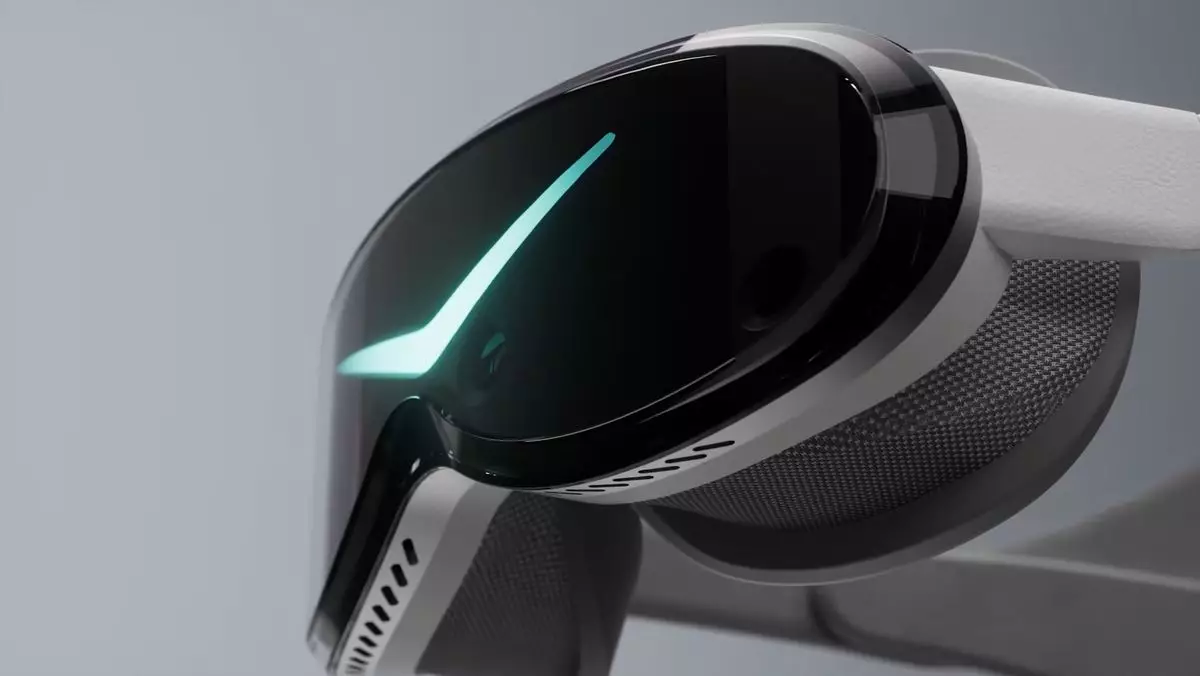The landscape of virtual reality (VR) headsets is rapidly changing, with substantial advancements making once heavy and cumbersome devices remarkably sleek and sophisticated. Pimax, a prominent player in the VR industry, is preparing to launch its revolutionary Dream Air headset. At a mere 200 grams, this groundbreaking device offers an exciting divergence from the typically hefty VR headsets that have dominated the market. As we examine the capabilities and implications of this innovation, it becomes evident that Pimax is standing at the forefront of a new era in immersive experiences.
One of the key selling points of the Pimax Dream Air is its weight. Claiming to be smaller and less burdensome than other top-tier VR headsets—such as the Valve Index and Meta Quest 3S—Pimax has crafted a device that promises comfort without sacrificing performance. The use of cutting-edge Micro-OLED technology allows for this unprecedented reduction in weight. Micro-OLEDs not only enhance the sharpness of the visuals but also facilitate the use of pancake optics, ultimately creating a more streamlined device.
At a price point of $1,199 for initial reservations and a total cost approaching $2,000, the Dream Air is positioned as a premium device in the VR market. It distinguishes itself with a unique combination of features aimed at serious gamers and tech enthusiasts, providing capabilities that rival—if not exceed—many of its heavier competitors. Yet, the added cost raises a pivotal question: are users willing to pay a significant premium for a lighter headset?
In addition to its lightweight design, the Dream Air is packed with a suite of advanced features that would appeal to both casual users and VR aficionados. The inclusion of inside-out tracking cameras, a microphone for communication, integrated spatial audio, and a variety of ports sets the stage for a fully immersive experience. Pimax does not skimp on functionality; the headset also supports hand tracking and offers the coveted eye tracking that has become essential for enhanced interaction and control.
The rivalry within the VR space ensures that competition remains fierce. For example, the 127-gram Bigscreen Beyond presents a formidable challenge, but it lacks the integrated eye tracking that the Dream Air offers. This key element could substantially elevate user interaction and create an unparalleled immersive experience, providing a compelling argument for consumers looking for cutting-edge technology.
While the Dream Air impressively showcases a plethora of advanced features, the significant price differential compared to Pimax’s Crystal Super raises questions about consumer value. The Crystal Super, priced at $699, offers numerous features but with added weight. It is essential to analyze whether the substantial investment in the lightweight Dream Air is justified by the additional portability and cutting-edge technology it provides.
Pimax has historically faced mixed reviews regarding its earlier headsets, prompting skepticism as to whether the Dream Air and the increasingly sophisticated Crystal Super will meet user expectations. However, with advancements in Micro-OLED technology and the latest developments in optics, the potential for a superior experience remains high. Pimax’s venture also demonstrates a future trajectory where lightweight gear could become the standard, making it an attractive option for long-duration gaming sessions or VR exploration.
Projecting into the future, Pimax anticipates that the Dream Air will begin shipping in May 2025, coinciding with the expected release of the Crystal Super. This timeline suggests that consumers are on the brink of a new frontier in virtual reality, where weightless design and powerful performance can coexist. While the limitations of prior models may weigh heavily on consumer sentiment, there is a palpable excitement for Pimax’s innovative offerings.
Pimax’s Dream Air VR headset stands to redefine user experiences by emphasizing lightweight design without compromising on features. The stakes are high, as potential users must evaluate the balance between cost and performance. As VR technology continues its inevitable evolution, the Dream Air may very well lead the charge for a new generation of mobile and immersive experiences. The question remains—will it deliver on its ambitious promises, and can it truly change the way we engage with virtual reality? Only time will tell, but the anticipation itself is undeniably thrilling.

